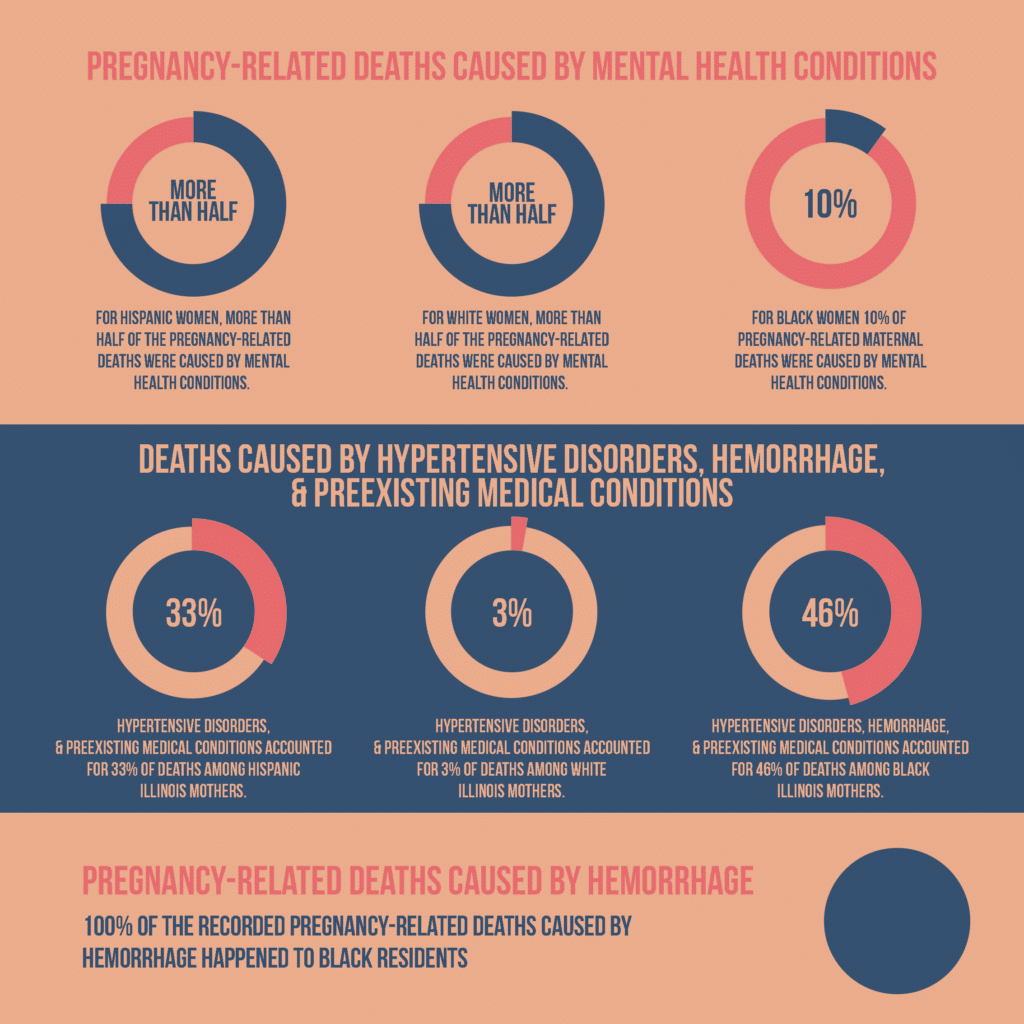The Illinois Department of Public Health recently released the state’s second report on maternal mortality, which helps identify statewide trends in maternal health and death. The report shows some concerning trends for Illinois women, such as Black women still dying at an unacceptable disparity.
The new report found Black women to be three times as likely to die because of pregnancy-related causes as White women. This disparity is half of the rate in the state’s first report that was released in October 2018, in which Black women were found to be more than six times as likely as White women to die from pregnancy-related causes.
Despite the new report showing the maternal mortality disparity gap between White and Black Illinoisans to be closing, the reason behind that is not the improvement in the conditions for Black women. The main reason for the gap closing has been the deteriorating conditions for White women, especially because of mental health disorders.
The report found 40% of pregnancy-related deaths to be caused by mental health conditions like schizophrenia, depression, and substance use disorder. The next most common causes of death included:
The committees that compiled the report determined that 83% of pregnancy-related deaths were preventable. These deaths could have been avoided if healthcare providers or community systems made some reasonable changes.

The causes of deaths differed among ethnic groups. For White and Hispanic women, more than half of the pregnancy-related deaths were caused by mental health conditions. On the contrary, mental health conditions were responsible for only about one in 10 Black maternal deaths.
Hypertensive disorders, hemorrhage, and preexisting medical conditions accounted for 46% of deaths among Black Illinois residents and 33% of deaths among Hispanic residents. The three accounted for only 3% of deaths among White women. All the recorded pregnancy-related deaths caused by hemorrhage happened to Black residents.
Birth trauma lawyers see many cases where maternal complications during labor and delivery result in women having health issues that extend well beyond the pregnancy. Therefore, it comes as no surprise that the report found 1 in 3 pregnancy-related deaths occurred 2 to 11 months after childbirth.
The report findings show that rates of pregnancy-related deaths increase with maternal age. Women aged 35 to 39 years old had higher rates than women under 35 years old. They were 70% more likely to die from pregnancy-related causes than women below 25 years old.
By identifying and reviewing adverse maternal health outcomes, the state’s Department of Public Health aims to build on the findings to prevent future maternal morbidities and mortalities.